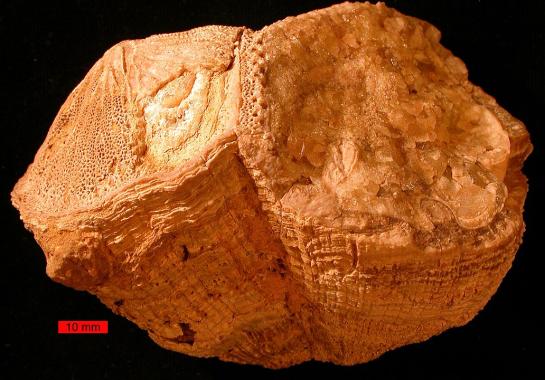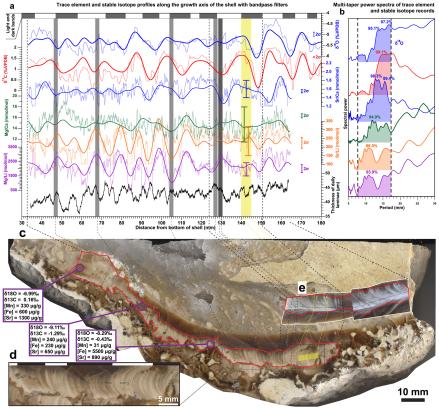
Days were shorter in time of the dinosaurs, according to 2020 AMGC paper in Paleoceanography and Paleoclimatology published by the American Geophysical Union (AGU).
This paper is among the AGU top-download of 2020
Study directed by AMGC Dr. Niels de Winter (FWO post-doctoral researcher) and EU Marie Curie Fellow at Utrecht University, using very high resolution analyses of the variation in the chemistry of the shell of Torreites sanchezi rudist mollusks, shows that in the Cretceous days lasted on average only 23:30 hours... much shorter than today.
These extinct mollusk Torreites sanchezi known as rudist clams were abundant and diversified in the Cretaceous and their shells show abundant growth rings. The new study direct by Dr. Niels de Winter, published in the well-known Paleoceanography and Paleoclimatology journal used laser ablation ICPMS to analyse their shells at high resolution (down to subdaily) and count the layers to understand rudist life and how water conditions changed in the Cretaceous. The work reveals that a day in the Cretaceous was shorter lasting only 23:30 hours compared to today, this implies that the Earth rotated faster, roughly 372 times a year. The study also demonstrates that most likely rudist lived in symbiosis with photosynthetic algae, just like modern corals.
Click here to read the paper or the AGU press release
Worldwide press coverage reported these results, Newsweek, Der Spiegel, Knack, Science Daily etc. (Altmetric)
Read some poetry about it https://thepoetryofscience.scienceblog.com/1167/ancient-rings-of-time/

The work reports subdaily resolved chemical records through fossil mollusk shell calcite. Trace element profiles resolve periodic variability across ~40-μm-thin daily growth laminae in a Cretaceous Torreites sanchezi rudist bivalve. These high-resolution records are combined with seasonally resolved stable isotope and trace element records that allow shell-chemical variability to be discussed on both seasonal and daily scale. A combination of layer counting, spectral analysis of chemical cyclicity and chemical layer counting shows that the rudist precipitated 372 daily laminae per year, demonstrating that length of day has increased since the Late Cretaceous, as predicted by astronomical models. This new approach to determine the length of a solar day in geologic history through multiproxy chemical records at subdaily resolution yields considerably more control on the uncertainty of this estimate. Daily chemical variability exceeds seasonal variability in our records, and cannot be explained by diurnal temperature changes. Instead, we postulate that rudist shell chemistry is driven on a daily scale by changes in light intensity. These results together with those of stable isotope analyses provide strong evidence that Torreites rudists had photosymbionts. Bivalve shell calcite generally preserves well. Therefore, this study paves the way for daily-scale reconstructions of paleoenvironment and sunlight intensity on geologic time scales from bivalve shells, potentially allowing researchers to bridge the gap between climate and weather reconstructions. Such reconstructions improve shell chronologies, document environmental change in warm ecosystems, and widen our understanding of the magnitude of short-term changes during greenhouse climates.

Very high resolution (~ µm) trace elements and stable isotope analyses across the rudist shell
